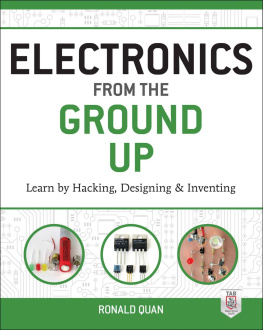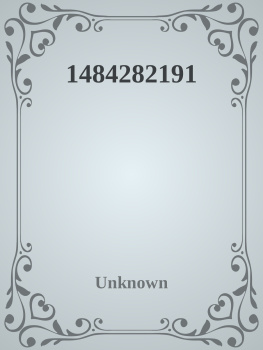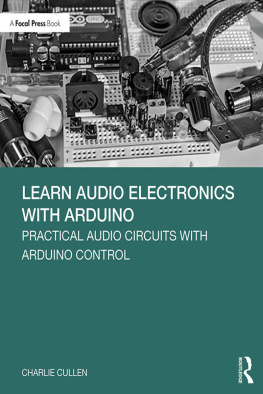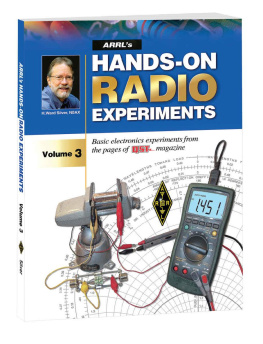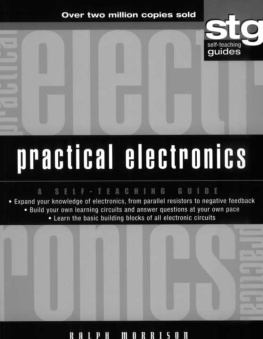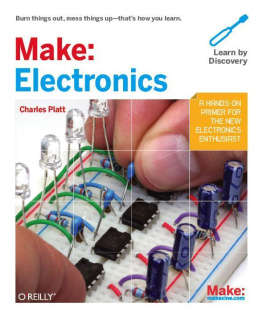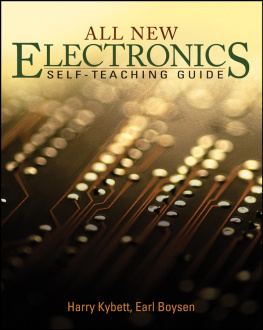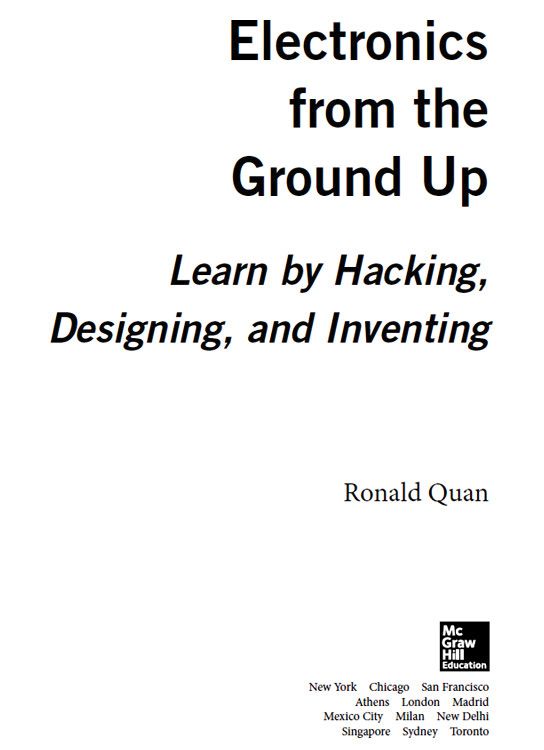About the Author
Ronald Quan has a BSEE degree from the University of California at Berkeley and is a member of SMPTE, IEEE, and the AES. He has worked as a broadcast engineer for FM and AM radio stations, and he also holds an Extra Class amateur radio license.
He is the author of Build Your Own Transistor Radios (McGraw-Hill/TAB Electronics, 2012), a book that covers theory and practice pertaining to radios, circuits, and signals and also includes a multitude of newly designed radio circuits.
For over 30 years he has worked for companies related to video and audio equipment (Ampex, Sony, Macrovision, Monster Cable, and Portal Player). At Ampex, he designed CRT (cathode ray tube) TV monitors and low-noise preamplifiers for audio and video circuits. Other designs included wide-band FM detectors for an HDTV tape recorder at Sony Corporation, and a twice color subcarrier frequency (7.16 MHz) differential phase measurement system at Macrovision, where he was a Principal Engineer. Also at Macrovision he designed several phase lock loop circuits to provide a regenerated clock signal from the raw EFM (eight-fourteen modulation) data stream from a CD player.
At Hewlett Packard, working in the field of opto-electronics, he developed a family of low-powered bar code readers, which used a fraction of the power consumed by conventional light pen readers.
Currently, he is the holder of at least 400 worldwide patents (which includes over 80 United States patents) in the areas of analog video processing, video signal noise reduction, low-noise amplifier design, low-distortion voltage-controlled amplifiers, wide-band crystal voltage-controlled oscillators, video monitors, audio and video IQ modulation, in-band carrier audio single-sideband modulation and demodulation, audio and video scrambling, bar code reader products, and audio test equipment.
In 2005 he was a guest speaker at Stanford University Electrical Engineering Departments graduate seminar, talking on lower noise and distortion voltage-controlled amplifier topologies. He has served as a mentor in three different electrical engineering lab courses at Stanford University. And in November 2010 and October 2012 he presented papers in audio amplifier distortion to the Audio Engineering Societys Conference in San Franciscos Moscone Center.
Copyright 2015 by McGraw-Hill Education. All rights reserved. Except as permitted under the United States Copyright Act of 1976, no part of this publication may be reproduced or distributed in any form or by any means, or stored in a database or retrieval system, without the prior written permission of the publisher.
ISBN: 978-0-07-183729-3
MHID: 0-07-183729-9
The material in this eBook also appears in the print version of this title: ISBN: 978-0-07-183728-6, MHID: 0-07-183728-0.
eBook conversion by codeMantra
Version 1.0
All trademarks are trademarks of their respective owners. Rather than put a trademark symbol after every occurrence of a trademarked name, we use names in an editorial fashion only, and to the benefit of the trademark owner, with no intention of infringement of the trademark. Where such designations appear in this book, they have been printed with initial caps.
McGraw-Hill Education eBooks are available at special quantity discounts to use as premiums and sales promotions or for use in corporate training programs. To contact a representative, please visit the Contact Us page at www.mhprofessional.com.
McGraw-Hill Education, the McGraw-Hill Education logo, TAB, and related trade dress are trademarks or registered trademarks of McGraw-Hill Education and/or its affiliates in the United States and other countries and may not be used without written permission. All other trademarks are the property of their respective owners. McGraw-Hill Education is not associated with any product or vendor mentioned in this book.
Information contained in this work has been obtained by McGraw-Hill Education from sources believed to be reliable. However, neither McGraw-Hill Education nor its authors guarantee the accuracy or completeness of any information published herein, and neither McGraw-Hill Education nor its authors shall be responsible for any errors, omissions, or damages arising out of use of this information. This work is published with the understanding that McGraw-Hill Education and its authors are supplying information but are not attempting to render engineering or other professional services. If such services are required, the assistance of an appropriate professional should be sought.
TERMS OF USE
This is a copyrighted work and McGraw-Hill Education and its licensors reserve all rights in and to the work. Use of this work is subject to these terms. Except as permitted under the Copyright Act of 1976 and the right to store and retrieve one copy of the work, you may not decompile, disassemble, reverse engineer, reproduce, modify, create derivative works based upon, transmit, distribute, disseminate, sell, publish or sublicense the work or any part of it without McGraw-Hill Educations prior consent. You may use the work for your own noncommercial and personal use; any other use of the work is strictly prohibited. Your right to use the work may be terminated if you fail to comply with these terms.
THE WORK IS PROVIDED AS IS. MCGRAW-HILL EDUCATION AND ITS LICENSORS MAKE NO GUARANTEES OR WARRANTIES AS TO THE ACCURACY, ADEQUACY OR COMPLETENESS OF OR RESULTS TO BE OBTAINED FROM USING THE WORK, INCLUDING ANY INFORMATION THAT CAN BE ACCESSED THROUGH THE WORK VIA HYPERLINK OR OTHERWISE, AND EXPRESSLY DISCLAIM ANY WARRANTY, EXPRESS OR IMPLIED, INCLUDING BUT NOT LIMITED TO IMPLIED WARRANTIES OF MERCHANTABILITY OR FITNESS FOR A PARTICULAR PURPOSE. McGraw-Hill Education and its licensors do not warrant or guarantee that the functions contained in the work will meet your requirements or that its operation will be uninterrupted or error free. Neither McGraw-Hill Education nor its licensors shall be liable to you or anyone else for any inaccuracy, error or omission, regardless of cause, in the work or for any damages resulting therefrom. McGraw-Hill Education has no responsibility for the content of any information accessed through the work. Under no circumstances shall McGraw-Hill Education and/or its licensors be liable for any indirect, incidental, special, punitive, consequential or similar damages that result from the use of or inability to use the work, even if any of them has been advised of the possibility of such damages. This limitation of liability shall apply to any claim or cause whatsoever whether such claim or cause arises in contract, tort or otherwise.
Contents
Preface
Learning electronics from the ground up requires a foundation of knowledge of electronic components more than resistors, capacitors, diodes, and transistors. This book also covers different types of batteries and construction techniques.
This book is roughly divided into three sectionsbeginner, intermediate, and advanced levels for the hobbyist. There are projects for the hobbyist in all these sections to gain some practical experience and to reinforce some basic principles in electronics.
As the title says, Electronics From the Ground Up, this book is intended not only to introduce the hobbyist to electronics but also to lift the hobbyist to the next level in terms of learning and building more complicated circuits. This book is geared toward the hobbyist. However, there are some advanced topics discussed as well, such as a look into harmonic distortion analysis, which is written in terms of high school mathematics.

